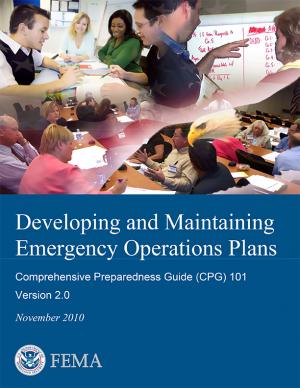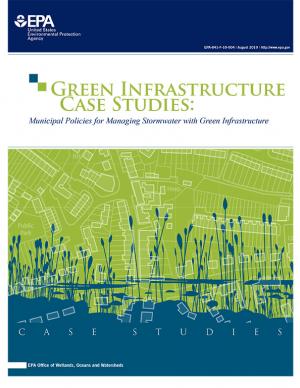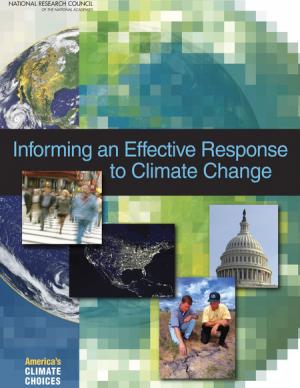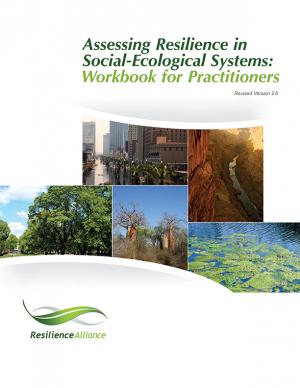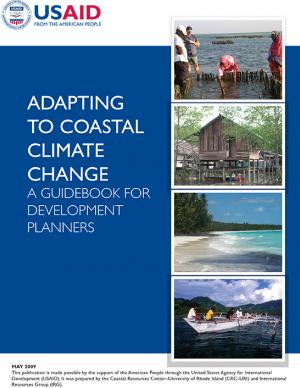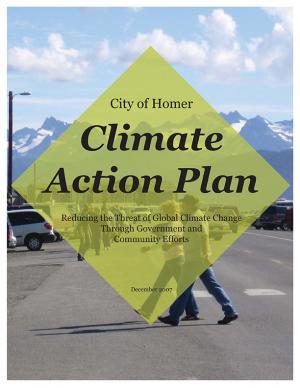Access a range of climate-related reports issued by government agencies and scientific organizations. Browse the reports listed below, or filter by scope, content, or focus in the boxes above. To expand your results, click the Clear Filters link.
A report on climate change impacts and climate change action plans for marine ecosystems on California's north-central coast. It presents scientific observations and expectations to identify potential issues related to changing climate—with an emphasis on the most likely ecological impacts and the impacts that would be most severe if they occur.
The Drought-Ready Communities pilot project culminated in summer 2010 with this guide to community drought preparedness, which communities throughout the U.S. can use the guide to understand and reduce their drought risk.The process outlined is broad-based, recognizing that drought creates problems that go beyond the scope of what water suppliers alone can address. With that in mind, the guide provides worksheets, planning tips, and case studies to help communities hone in on processes and solutions to drought.
This report—known as the Comprehensive Preparedness Guide (or CPG) 101—is designed to help both novice and experienced planners navigate the planning process for emergency operations. Used in its entirety, the guide provides information and instruction on the fundamentals of planning and their application. A detailed planning checklist is provided.
In determining appropriate adaptation strategies, project staff worked with participants to survey a wide range of potential strategy options and develop a process for evaluation and prioritization of targeted strategies.
The Plan's goals include reducing community-wide greenhouse gas emissions 10 percent below 1990 levels by 2020, reducing community-wide fossil fuel use 50 percent by 2030, and identifying strategies that will help the community adapt to climate change and rising fuel prices
This report presents the common trends in how 12 local governments across the country developed and implemented stormwater policies to support green infrastructure. The local policies examined include interagency cooperation, enforcement and management issues, and integration with state and federal regulations. While a strong motivation for these policies and programs is innovation in stormwater management, many communities are moving past the era of single objective spending and investing in runoff reduction and stormwater management strategies that have multiple benefits. Green infrastructure approaches have a range of benefits for the social, environmental, and economic conditions of a community. Not only do these case studies include success stories for building a comprehensive green infrastructure program, but they also provide insight into the barriers and failures these communities experienced while trying to create a stormwater management system that includes more green infrastructure approaches.
This volume in the National Research Council's America's Climate Choices series describes and assesses different activities, products, strategies, and tools for informing decision makers about climate change, including education and communication, and information systems and services for helping them plan and execute effective, integrated responses. Information and reporting systems discussed include climate services and a greenhouse-gas accounting system.
The workbook for practitioners uses strategic questions and activities to assess resilience in social-ecological systems. The approach involves constructing a conceptual model of a system that includes resources, stakeholders, and institutions, and identifies potential thresholds between alternative systems states in order to provide insight into factors that build or erode a system's resilience. A resilience assessment can help with developing strategies for coping with uncertainty and change.
This report provides a detailed treatment of climate concerns in coastal areas, and proposes an approach for assessing vulnerability to climate change and climate variability, developing and implementing adaptation options, and integrating options into programs, development plans, and projects at the national and local levels. This is known as a vulnerability and adaptation, or V&A, approach.
King County in Washington State has established a comprehensive program to prepare for climate change, and many of the tools and strategies that King County has employed can be applied in other communities. This memorandum from the King County Office of Strategic Planning and Performance Management, published by the American Planning Association, describes strategies developed in King County to direct local government efforts to address climate change.
A collection of case studies and information about how coastal communities can plan for and adapt to climate change. These resources represent a national guide for how coastal communities can plan and adapt. Case study issues range from coastal managers addressing sea level rise in Rhode Island to coral bleaching caused by rising sea temperatures in Florida.
This report presents the projected impacts of climate change on the Rogue River Basin of southwest Oregon.
This plan—the first in Alaska—was developed by Homer's Global Warming Task Force and includes an inventory of greenhouse gas emissions from city facilities and community-wide, sets targets for reduction, and presents strategies for reducing emissions.
This Executive Order requires that King County, Washington, municipal departments employ coordinated strategies of land use to mitigate and adapt to global warming.
Pages
- « first
- ‹ previous
- 1
- 2
- 3
- 4



